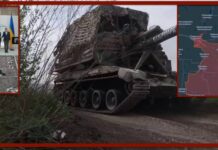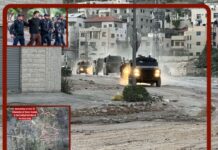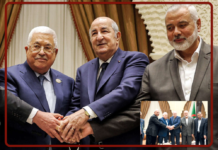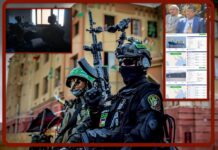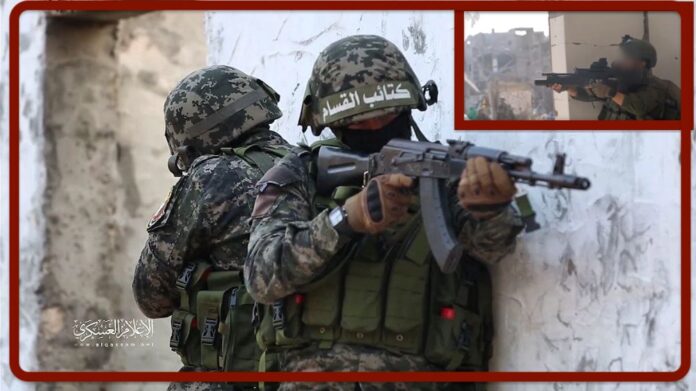
The war between Israel and Hamas has entered the survival phase: us or them. Netanyahu’s spokesman said at the weekend: “We did not start this war, but we will end it on our own terms and with a clear and uninterpretable victory. Our operations focus on dismantling Hamas and creating conditions for the release of other abductees.” Israeli media wrote, quoting former Mossad chief Tamir Pardo: “If we don’t reach an agreement on the prisoners, we will create 130 more Ron Arads for ourselves.” Arad is an Israeli pilot, a prisoner of the Shiite Amal movement since 1986. Left for dead by Hezbollah, he is considered missing in action by Israel.
Over the weekend, however, Israel and Hamas agreed on the issue of prisoner exchange. Not only has the Israeli government given the green light to kill all Hamas leaders in Lebanon, Turkey and Qatar, as well as the head of the Israeli Shin Bet in Gaza. On December 2 at 2pm Italian time, the head of the Mossad, on the instructions of the Prime Minister, ordered the withdrawal of negotiators from Qatar due to a “deadlock in the negotiations”, according to Netanyahu’s Office.
The war continues on multiple fronts and the situation is starting to be very critical for Israel too; an Israeli army spokesperson told CNN: “We have not yet defeated Hamas in northern Gaza and the operation is difficult, as is the fighting terrain.” Israeli authorities have confirmed that after the completion of the operation in the Gaza Strip, they intend to create a buffer zone in the enclave for security reasons, the Times of Israel reported on Sunday.
“To ensure security, the Department of Defense is discussing the formation of a buffer zone on the border, on the Gaza side, so that the Hamas group cannot concentrate forces near the border and again take actions unexpected for Israel,” he said. declared an anonymous Israeli government official. he told the Times of Israel. “This is a security measure, not a political step. We do not intend to remain on the other side of the border, in Gaza,” he clarified.
Among the unknowns to be managed for Israel is Hezbollah. On December 3, Israeli Prime Minister Benjamin Netanyahu once again warned the Lebanese Hezbollah movement against going to war. He threatened that this would lead to the destruction of Lebanon. Gantz added: “We advise Hezbollah and the Lebanese government not to test us further, because the situation will be very bad and horrible in Lebanon, and what happens in Gaza will be many times worse in Lebanon.” On December 4, the Israeli Foreign Minister intervened on the matter: “Either Hezbollah will move away from the borders, otherwise Beirut will become like Gaza!”.
The former chief of staff of the command of the northern front of the Israeli army, Asher Ben Lulu, thinks differently: “We must stop talking as if Hezbollah was paying a high price and as if we had removed it from the borders, and we must say frankly : Hezbollah is the one who decides on the northern front.”
According to the Israeli Channel 13: “We must be realistic. We cannot, in these times, control Gaza or expand into Lebanon, Syria or anywhere else. The issue has become very difficult… The best thing that should happen now is to remove the kidnapped people from Gaza. We failed in the north of Gaza and now we are trying in the South. Failure in the South means the victory of Hamas forever, channel 13 quotes the words of Minister Itamar Ben-Gvir.
The United States has supplied Israel with highly destructive bombs, tens of thousands of artillery shells and other types of weapons since October 7, the Wall Street Journal reported. There is talk of around 15 thousand bombs, including the bunker-busting BLU-109 bombs. The number of directed artillery shells can be 57 thousand.
Pentagon chief Lloyd Austin said Israel’s tactical victory could turn into a strategic defeat if civilians fell “into the arms of the enemy.” Austin believes that urban combat cannot be won without protecting civilians.
French President Emmanuel Macron said that if Israel intends to completely destroy the Palestinian Hamas movement, the war will last ten years and called on the Israeli authorities to more precisely formulate their goal in the conflict.
Iranian President Ibrahim Raisi on December 4 called: “The formation of an alliance between the various continents of the world to defend the Palestinian people from Zionist crimes”
Turkish President Recep Tayyip Erdogan has stated that he does not recognize the radical Palestinian movement Hamas as a terrorist organization and does not want to reconsider its position in the future and in a speech during a ministerial session of the Organization of Islamic Cooperation in Istanbul he declared: “The butcher of Gaza Netanyahu admitted on camera that his expansionist goals are not limited to Ramallah and Gaza. Therefore, defending Gaza and Palestine today means at the same time defending Jerusalem, Mecca, Medina, Damascus, Istanbul and other Islamic cities.”
And here is a summary of the situation between Israel and Hamas: starting from December 2nd, the Israeli Defense Minister stated that the army is fully resuming hostilities against Hamas regime
Euro-Mediterranean Human Rights Monitor states: “Israel returns with increased intensity of fire, accompanied by the announcement of plans for forced displacement from new areas in the southern Gaza Strip, crushing all forms of civilian life in Gaza and returning the population to pre-industrial phase conditions, after having transformed houses, factories, companies and infrastructures into piles of rubble.
IDF spokesperson Rear Admiral Daniel Hagari said: “The IDF continues to expand its ground operations against the main Hamas fronts in the Gaza Strip. Wherever there is a Hamas stronghold, the IDF operates. Israeli forces fight the terrorists face to face and kill them. The IAF, in collaboration with the Directorate of Military Intelligence and the ISA, works around the clock to counter threats in parallel with ground operations, thereby increasing the security of our forces and using the ground operation to unmask and target the enemy.
We also continue to eliminate the terrorists who are leading the fighting. On 4 December, the IDF, based on guidance from ISA and intelligence units, and as part of the Southern Command operation, targeted and killed the commander of the Shati battalion, HAMAS, through an airstrike. The Shati battalion commander has been leading the fighting for the past month in the Shati area. Under his command, infiltrations into Israeli territory also occurred, including the brutal massacre of October 7. We will continue to pursue, locate and eliminate any commander who terrorizes the area under his control, as we did yesterday with the Shejaiya battalion”.
“The 137 hostages taken on October 7 are still held in Gaza. We are tirelessly gathering intelligence and directing it to every relevant force to ensure we are not endangering [the hostages] and know how to exploit operational opportunities. We will continue to do so. We will do everything to bring them back. In the north we attack Hezbollah’s terrorist targets in Lebanon from the air and from sources from which rockets have been fired at our territory from Lebanon and Syria. One of the launches from Lebanon hit a military vehicle near Beit Hillel. Several soldiers and civilians were slightly injured and evacuated for medical treatment. Our policy is clear: we will vigorously target any threat to our territory. IDF troops are deployed and ready in the Northern Command and in all sectors,” he added.
On December 3, active hostilities resumed in the Gaza Strip. While in the previous two days Israeli troops had mainly probed militant defenses and cleared territory, the IDF on December 3 conducted a raid northeast of Khan Yunis and successfully gained control of a section of the highway Salah ad-Din. This was confirmed both by footage of Israeli tanks on the highway and by Hamas text messages reporting clashes in the area. Also on December 4th there was fighting in the eastern areas of Khan Yunis. And raids were carried out in Deir al-Balah
From this position, the IDF may attempt to reach the Ar-Rashid coastal highway in the coming days. If successful, Israeli units will be able to divide the Gaza Strip into three sections: the northern part with Gaza and satellite towns, the central part with the Nuseirat, Al-Maghazi and Deir al-Balah camps, and the southern part with Khan Yunis and Rafah where bombings were also recorded on 4 December. However, blocking land communications between the south and the center will worsen the humanitarian situation in the enclave, even if it will not significantly affect the logistical capabilities of the militants using the underground tunnels. IDF ground troops continue to operate in the Gaza Strip in parallel with IAF strikes on around 200 terrorist targets of the Hamas.
The Israeli army blows up the Palace of Justice building in Madinat Al-Zahra. Israel has moved to active military operations in the southern part of the Gaza Strip, which will be no less intense than in the north, the chief of general staff said.
Targeted attacks continue in the West Bank with an assault on the city of Habla, south of Qalqilya.
At the same time, Palestinian forces also carried out a series of attacks against Israeli troops. On December 3, the greatest number of Hamas attacks were recorded east of Juhr ad-Dik and in the Al-Mughraq area, where militants from the Kataib Izz ad-Din al-Qassam group detonated explosive devices. Additionally, Hamas heavily bombed settlements along the Gaza Strip border and fired rockets towards Tel Aviv and Beersheba. On December 4, Hezbollah stated that at 1 am on Monday 4/12/2023, they targeted a gathering of Israeli soldiers in the “Shatula” forest. The Al-Qassam Brigades said they targeted Kibbutz “Nirim”, bombed with a 114 mm “Rajum” short-range missile system. Al-Qassam also confirms the killing of some soldiers in the Sheikh Radwan area. Numerous launches from Lebanon during the night towards the Har Dov area, in northern Israel. The launches fell in open areas. A launch was also identified towards the Misgav Am area in northern Israel. Sirens sounded in Ashkelon and the Gaza Strip
Finally, on December 3, two ships owned by an Israeli company were attacked in the Red Sea. The Maariv publication reports that Israel is sending ships and submarines to the Red Sea following Houthi attacks. One of the ships risks sinking. According to the Pentagon, three commercial ships were attacked four times by the Houthis in the Red Sea in 24 hours, the Pentagon’s Central Command said. The destroyer USS Carney responded to distress calls and shot down three drones.
Antonio Albanese e Graziella Giangiulio


